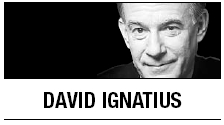WASHINGTON ― Because of the breakdown of political decision-making in the U.S. and Europe during the Great Recession, the burden of response has fallen largely on two big central banks: the Federal Reserve and the European Central Bank. And down the road, they are going to pay for it.

The balance sheets of these institutions have ballooned as they’ve pumped out cash ― adding so many new obligations that some economists worry the central banks may be sowing the seeds of the next financial crisis. And there’s a policy mismatch: Using the finely tuned monetary system in a blunt-force effort to bolster the global economy has been a bit like using a gold watch to pound a nail.
The ECB in particular has added assets over the past year, expanding its portfolio by more than 1.1 trillion euros since July 2011. This explosion of assets makes the ECB’s balance sheet (totaling about 3.1 trillion euros, or $3.8 trillion) considerably larger than the Fed’s (about $2.8 trillion).
Alan Greenspan, the former Fed chairman, finds the eurozone’s problems deeply worrying. “The trend is unrelenting,” says Greenspan, noting that the ECB has been adding more than $100 billion a month to its ledger over the past year after a prolonged period of stability.
Greenspan likens the eurozone financial system to a rowboat that’s leaking water through big holes in its bottom (representing the combined budget deficits of the eurozone). European leaders keep bailing the dingy out ― but the problem keeps getting worse because they don’t fill the holes. Greenspan argues that the task is not funding the budget deficits but eliminating them - a politically daunting task.
What the ECB is essentially doing is lending to eurozone banks (to fund sovereign bondholdings) and paying with checks written on the ECB. That puts euros into the system and eases the short-term crisis. But at some point, when the economy begins to pick up, the ECB (and the Fed, too) will have to tighten monetary policy quickly, which could mean a very sharp rise in interest rates and/or inflation.
Compared to the feckless politicians in Europe and America, the central bankers have been heroes during the financial crisis: Ben Bernanke at the Fed and Mario Draghi at the ECB have found creative ways to prop up sagging commercial banks, provide liquidity for markets and keep interest rates low through their very large purchases of debt, a process known as “quantitative easing.”
But skeptics argue that central bankers can’t be “lone rangers” riding to the rescue of nations held hostage by the economic downturn. Their policy instruments are limited, and can’t mandate the kind of investment that’s needed to bring recovery.
Here’s how the Bank for International Settlements, the normally cautious clearinghouse for central banks, stated it in an unusually frank annual report issued last month: “Simply put: central banks are being cornered into prolonging monetary stimulus as governments drag their feet and adjustment is delayed.” The report warned of “wasteful support of effectively insolvent borrowers and banks.”
The BIS admonished: “Central banks face the risk that, once the time comes to tighten monetary policy, the sheer size and scale of their unconventional measures will prevent a timely exit from monetary stimulus, thereby jeopardizing price stability. The result would be a decisive loss of central bank credibility and possibly even independence.”
The credibility issue is important because the Fed and ECB have been the most reliable policy anchors since the global financial crisis began in October 2008. Because of political paralysis in both the U.S. Congress and the leading European governments, the burden of adjustment has fallen largely to the central banks, whose leaders are professional economists and, hopefully, outside politics.
But even Bernanke, in congressional testimony last week, appeared wary of adding to the Fed’s portfolio with another round of quantitative easing. And House Republicans cautioned that, as Rep. Jeb Hensarling of Texas put it, “there are limits to what monetary policy can achieve.”
The global system needs growth, but through reforms that open markets and encourage new investment and jobs, rather than from a monetary system on steroids. And enough talk about “austerity,” with its implicit moral tone of repentance. What’s needed is solvency.
Financial traders sometimes caution each other that during a downturn in the market, “don’t try to be a hero.” Central bankers have waived that rule over the past four years in trying to rescue the system when other policymakers failed to act. But heroism can become a liability, as the ballooning balance sheets show.
By David Ignatius
David Ignatius’ email address is davidignatius@washpost.com. ― Ed.
(Washington Post Writers Group)








